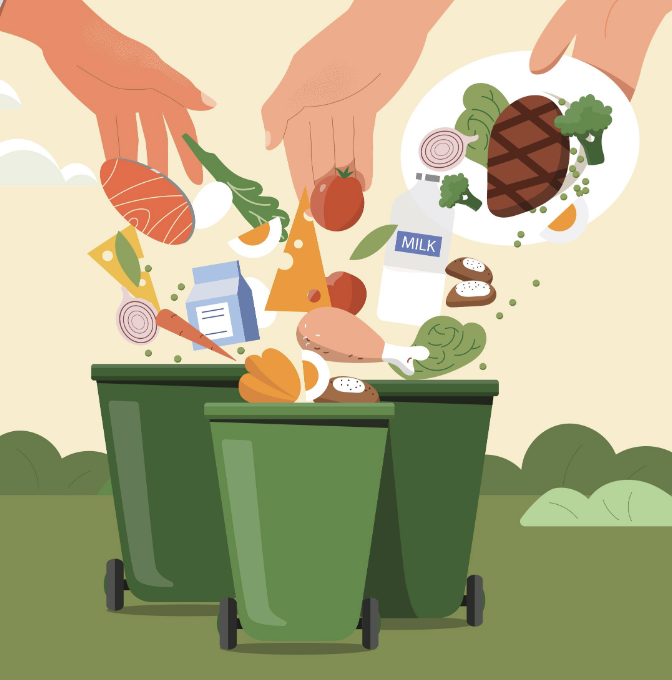Reducing Food Waste

By Jennifer Tveitnes, RD, LD, Clinical Dietitian, Boone Health Bariatrics
Food waste is a significant issue in the United States. The U.S. Department of Agriculture, or USDA, estimates that approximately 31% of food is wasted by retailers and consumers.
Throwing out so much uneaten food has many impacts. Safe food that could feed people facing food insecurity often ends up in landfills. Food waste uses up resources needed to grow, process, transport, prepare, store, and dispose of food, including land, water, energy, and labor. In landfills, rotting food gives off methane gas, a powerful greenhouse gas that affects climate change. And American households spend about an average of $370 per person each year on wasted food. Limiting food waste is good for the environment and our pocketbooks!
There is a national initiative to reduce the amount of food wasted by Americans in half by 2030 – and you can help! These five simple steps can help you start reducing your food waste.
1. Plan Ahead
Build a weekly meal plan, then use it as a blueprint for your grocery list. Stick to the list when shopping to ensure everything you buy gets used. Avoid bulk purchases of anything that spoils quickly. To make sure you use vegetables and fruits before they can spoil, plan recipes that use fresh produce at the beginning of the week, then use frozen produce later in the week. When meal-planning, look at your schedule and be realistic about the time you have available. If Wednesday night is filled with activities and nobody will be home until late, it’s reasonable to plan to eat out that day. Purchasing food you won’t have time to prepare will lead to waste.
2. Get Creative
Shop your kitchen by looking in your freezer, refrigerator, and pantry. Take stock of items you already have that you can use for meals or that need to be used. This ensures you use foods you have before they go bad. If you have several different foods you need to use before they spoil, combine them into a creative dish! Use your favorite spices, seasonings, and sauces to make a unique recipe. Challenge household members to come up with creative ideas, too. You may be surprised at how delicious it turns out.
3. Skip Precut Produce
Produce spoils faster after it’s cut. Unless you plan to use produce in the next day or two, choose uncut produce in its whole form. At home, wait to cut produce until you’re ready to use it, if possible. Uncut produce also costs less than precut, saving you money!
4. Don’t Prewash
Exposing produce to water causes it to spoil faster. Washing fresh fruits and vegetables as soon as you get home could result in them going bad before you get the chance to eat them. If you must wash produce in advance, dry it as much as possible and store it in a container lined on the bottom with a kitchen towel or paper towel to absorb excess moisture and prevent spoilage.
5. First In, First Out
Store your foods using the first in, first out method. When you buy new food items, put them in the back of your refrigerator or pantry and move any items already there up front. This encourages you to use foods you’ve had longer, lessening they’ll be forgotten and spoil.
For more tips on how to reduce food waste at home and in your community, visit www.usda.gov/foodlossandwaste.com